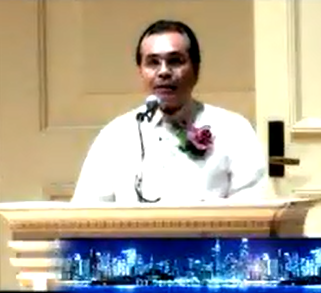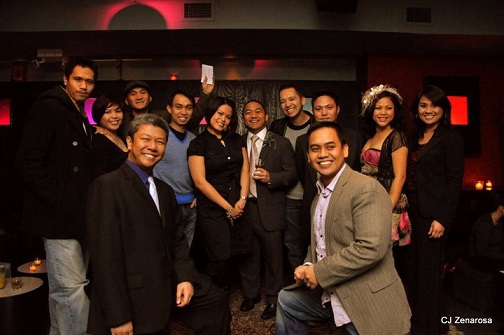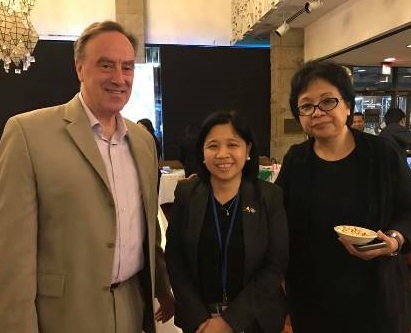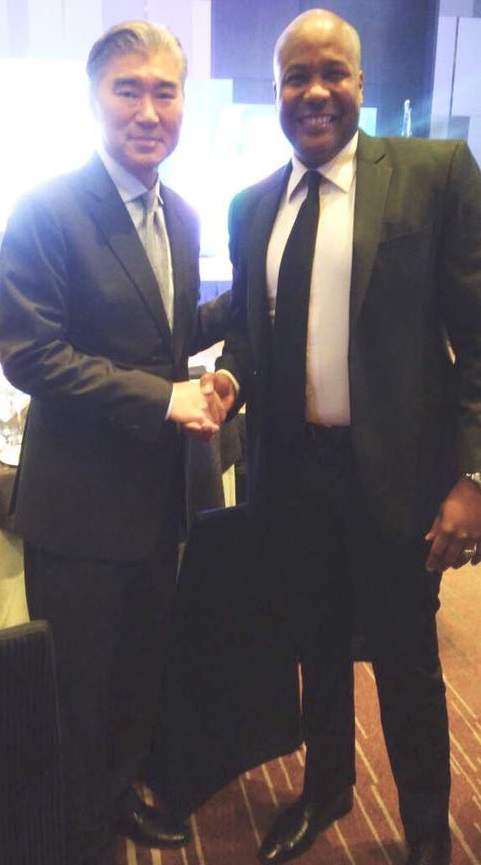‘Why is your Adobo so expensive?’ (Part 2)

By Cristina DC Pastor
Chefs Aris Tuazon and Joel Javier said they have come across comments that say restaurant food, Adobo among them, is overpriced.
“Definitely we encounter that,” said Aris. “The thing with these dishes we are creating that people complain about is that people probably know how to cook this dish. But beyond that you don’t know the labor cost and everything especially when you are in Manhattan. So I just politely explain to them that the cost of living here is different than what you do back home.”
“I don’t get offended,” added Aris. “I try to open their minds to it for them to understand what is it really like to be in this business. Because you are not just creating food here you are going beyond food. You are creating a hub here where people can socialize and you’re basically building a community. So you don’t just come here for Adobo and pay for it.”
Flip Eats’ prices are “customizable,” said Joel.
“I think what’s great with Flip Eats is it’s very customizable as far as we try to work the best and (make sure) we can survive. We have a low overhead. So I have more flexibility as far as working with your budget but also keeping our integrity. Like this is who we are and this is the value that we bring in being a chef and what I put on the table.”
The price actually depends on the customer and his budget, said Joel.
“We will work with you. (If they say) I only have an X amount of budget. Then we can say we are sorry we can’t put that lobster in.
“There is a lot of back and forth through email. We talk about the customers’ favorite dishes then we make a menu for them. Oh I don’t want that I want this. Then we combine it. It’s a lot of work. And then we have to execute it.”
Sometimes, observed Joel, people forget that having someone cook for you is a luxury.
“The Filipinos know that in the Philippines you have maids. But here it does cost money people’s time and effort and that is something to be reminded of. Like I said it is not just the food. Somebody has to take care of you, have to wash the dishes, have to make sure the plates are clean and so much more to it. That is a struggle.”
Looking for investors
Aris, who has opened several restaurants in New York City over the years, talked about what he is looking for in potential investors.
“Getting investors is kind of hard,” he said. “So you have to have some kind of reputation of what you have done from the past. Your portfolio has to be impressive because basically you’re telling them give me your money.”
In some instances, he said, you don’t look for them. “They come to you.”
“Some you don’t even have to find them, they come to you. But this strategy that we have and are using does not only rely on one or two investors. It’s like you put in a number of shares and from there you can attract small investors.”
Aris is cautious of investors who want to get involved in operations of the restaurant as a chef. “Two heads sometimes don’t align,” he said.
His roadmap for opening a restaurant begins with building a concept or a feasibility study.
“It’s a lot to begin with from location to rent and how many people are going to be involved in the operation and from there you can project how much you need to provide to enable you to survive to make a profit. But one thing to learn in building a business or a restaurant is you don’t count your profit right away because that’s just going to frustrate you at the end of the day. So what you do is just start it and hope and pray that it will thrive. You just have to believe in your capabilities that you can deliver.
“Earning a profit did not happen overnight. I started as a chef then a partner and then did my own thing. Like I said what’s important here is building your portfolio or your reputation. How you can build the community that believes in you.”
Ugly Kitchen, according to Aris, gave him the opportunity to show the people not just the cuisine but also a community-based hub he can create.
“We did birthdays, baptism, graduation you name it whatever event we contributed on that. So you go beyond what you can do in the kitchen and that’s the most important part.”
At Grill 21, Aris was part of the build-out leading to menu development. He stayed with the restaurant for three years until he ventured into catering. A couple of years later, he entered into a partnership with Krystal’s in Woodside owned by Bruce Gomez.
“This was back in 2009. I was involved in that too. That was my first partnership with the owner under my full operation. That was the big break that I got and from there I realized I was ready. Then Ugly Kitchen was born in 2011.”
At Ugly Kitchen, Aris was both co-owner and chef.
“That was my very first restaurant that I invested in and at the same time we had three other partners. We lasted about nine years. We signed a10-year lease and we were on our last year when COVID happened.
A restaurant still a dream
Joel said he continues to mull over having a brick-and-mortar restaurant.
“For now I think I am all right but obviously it’s something we think about often. Having people have access to our food is what you think about. The value, the work we put in that more people can enjoy. It’s a dream maybe, but for now we’re enjoying the kind of flexibility (we have). It’s never out of the table.”
“If you can sleep at night keep it that way,” advised Aris to his friend. “Stay where you are.”
Oddly, ‘location, location, location’ is no longer a big thing when looking for a place to open a Filipino restaurant, said Aris.
“I think those days are over. I don’t think you just look at where the hospitals are if you are a Filipino restaurant. The audience has changed over the years or decades.
“When I started in 2005 I only relied on the Filipino market, but after 2011 that kind of changed because you are not only catering to Filipinos anymore. Other people try to experiment (on food choices). With the help of social media and all these celebrity chefs like Anthony Bourdain, it gave us a big contribution to elevate what is really Philippine food. Before, when you think of Asian cuisine you think Chinese, Thai, Japanese, Vietnamese or even Malaysian, Korean before choosing Filipino food. We were the underdogs but that was fine. This is the biggest contributions of Maharlika, Ugly Kitchen, Purple Yam and others.”
Asked to name their favorite Filipino restaurant, Joel replied Ugly Kitchen, Renee’s and Tito Rad’s. Aris said he still pines for Grill 21 because of its staying power.
“I’m pretty proud of what we have started,” he said. Then he added Tito Rad’s.
Part 1: Why Filipino restaurants go out of business; 2 chefs offer their insights












